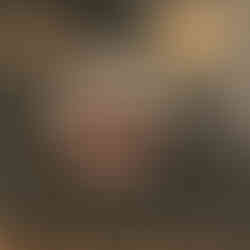DIY contact mics
- Ollie
- Apr 7, 2020
- 2 min read
Updated: Oct 3, 2021
Building your own contact mics is a great project to try as they are cheap and straightforward to make, with very little soldering, and not much to go wrong! Contact mics can produce great results, and are useful for recording things in isolation with out any background noise. Rather than record sound in air, they capture the vibration and resonance of the object they're in contact with, without recording any of the unwanted background noise you would capture with traditional microphones.
I particularly like recording scrapes and knocks of big metal objects. Its amazing how this method of recording can represent the sound of an object in a totally different way when compared to recording with conventional acoustic microphones.
I have to give credit here to Zach Poff, whose tutorial I followed (with a few small tweaks) to make these contact mics. You can see his post about his method here: https://www.zachpoff.com/resources/building-contact-mics/
Things you'll need:
piezo disc
length of cable
furniture leg protector discs (same diameter as the piezo disc)
6.35mm mono jack plug
heatshrink
hot glue and gun
electrical tape
Here's how to do it:
First off, choose piezo discs with the wires already attached. I've found that with the plain disks with no wires, it is easy to overheat them when soldering and damage the ceramic element. The polished metal of the disks also doesn't take solder as easily as the wires.
Take one of the furniture protector pads, and cut a little triangle out of it. Place the triangle over the top of the wire connections so that the wires come out either side. Slide a piece of heatshrink over the end of the mic cable and strip the ends off the inner cores.
Solder the inner cores to the piezo disc wires.
Bend the cores so they lay alongside the mic cable, lay it flat on top of the disc and glue it in place. Cut a middle channel out of another furniture leg protector and glue the two remaining edge pieces either side of the cable.
Cut a piece of electrical tape the same height of the discs, and wrap it around the outside. This keeps it neat by creating a barrier so the glue doesn't spill over the edge. Fill the channel with hot glue. I found that using the sticky plastic from the adhesive furniture pads, you can then push down on it on top of it to flatten it out.
Solder the jack connector on to the other end of the cable, and its finished! The heatshrink makes the cable wider where the connector boot slides on so the cable is not tugging on the connections when you pull it.
To get the best results from these DIY contact mics, you need to match their impedance to your mic input. If plugged straight in, you won't pick up any low frequencies above around 200Hz and the sound can be tinny. Between the cable and the recorder, you need a low to high impedance converter. I've gotten good results from using a 200Ω-50kΩ transformer such as the one made by HOSA, which you can plug the 6.35mm male jack into, which then outputs to male 3-pin XLR.

Heres a recording made with one of my homemade contact mics. I love the deep harmonics you get with these!































Comments